5. Yes, Madam! (1985)
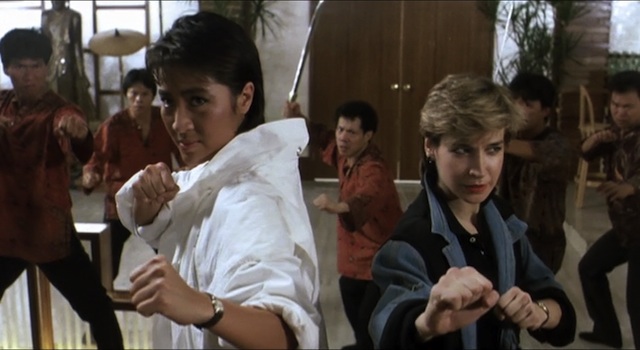
Possibly the most quintessential Hong Kong movie on this list, “Yes, Madam!” is simultaneously very much a product of its industry’s sensibilities, but also somewhat of a departure from them. On one hand, the film’s tone and choreography are in keeping with the trends of Chinese action flicks; on the other, it was one of the first to do so with female leads, opening up a whole new world of possibilities for the genre that allowed for women-centered action movies to exist more and more from then on.
It’s not even worth mentioning or trying to explain the plot, since this is a movie motivated by the flimsiest of macguffins (something to do with a stolen microfilm belonging to a Triad boss). What really matters here are the stunts and the actors performing them; “Yes, Madam!” was the first film for both of its leads, Michelle Yeoh and Cynthia Rothrock, who did themselves every bit of the high-risk craziness you see on the camera.
Yeoh, of course, is a legend and well known beyond her home thanks to the international success of films like “Crouching Tiger, Hidden Dragon,” but Rothrock is still somewhat obscure to everyone who isn’t a passionate fan of the genre; but make no mistake, she is a hugely gifted martial artist who can throw down with the best of them, something this movie demonstrates again and again, in spades.
“Yes, Madam!” can be a little uneven; as mentioned, the main plot is meandering, and a few of the subplots drag on for longer than necessary, but its high moments are so high you won’t remember the clunky bits in the middle. Once the credits are rolling, all you can think about is Michelle Yeoh jumping backwards over a rail while, at the same time, throwing two bad guys through the glass.
4. Tai Chi Master (1993)
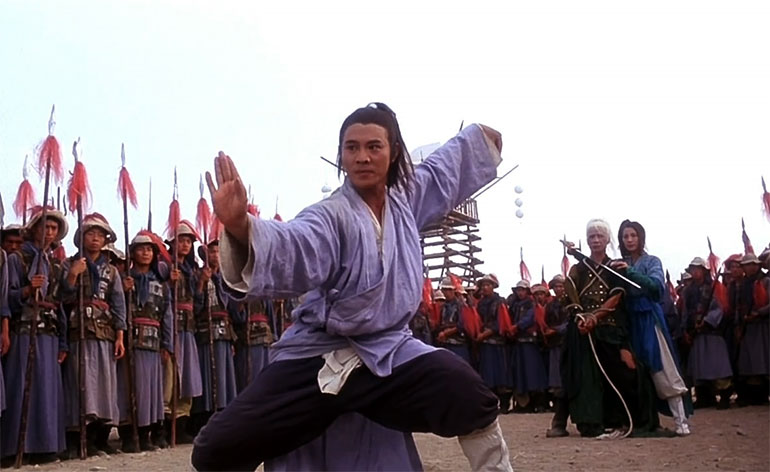
Even if you don’t know the name Yuen Woo Ping, you’ve definitely seen his work. As one of the most requested fight choreographers in the world, he worked in several iconic Hollywood martial arts movies like “The Matrix” and “Kill Bill,” not to mention some that weren’t made in the West but were still very successful there, like “Crouching Tiger, Hidden Dragon.” But even though these movies are tremendously popular, thanks in no small part to the spectacular fight scenes created by him, Yuen’s work as a director is still vastly underseen outside of his native China, which is a shame, because he has made some of the greatest kung fu movies ever. A good place to start with his filmography is “Tai Chi Master.”
Starring Jet Li at the peak of his early ‘90s star power, this is the story of two best friends who get expelled from their Shaolin Temple and, out in the world for the first time, find themselves going different ways until they end up on opposite sides of a civil war and have to face off. Along the way, they meet new people that will help them in their struggle, among them a character played by the iconic Michele Yeoh.
This is a hugely archetypal story of good vs. evil, collective good vs. selfish ambition, nature vs. materialism, and Yuen plays that to maximum effect; at one point, the villain even gets dressed with an all-black armor to contrast with Li’s all white robe. And that decision works beautifully: the simplicity of the narrative is elevated to a mythical level, making the emotional punches land harder than they otherwise would.
And the action scenes are simply insane; the fight choreography here is so elaborate and is staged with such raw vivacity that Yuen’s work in America seems tame in comparison (there’s a scene in which Yeoh uses pieces of a broken table as stilts to kick harder with, and that’s just within the first 30 minutes of the movie).
Fun, emotional, and thrilling, “Tai Chi Master” is just about everything you could ask out of a kung fu flick, and the only reason it doesn’t place higher on this list is because it’s not Yuen Woo-ping’s best movie…
3. Iron Monkey (1993)
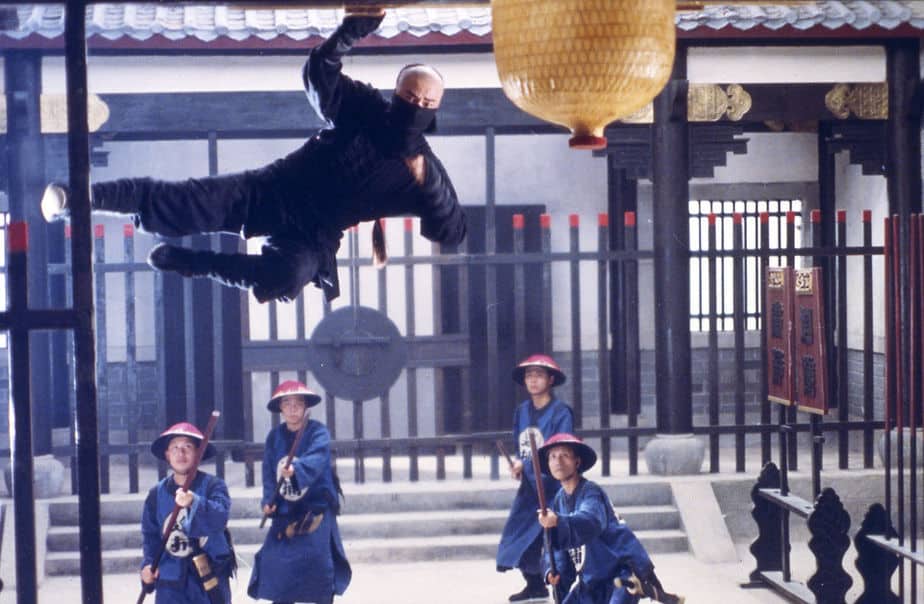
Because Yuen Woo-Ping’s best movie is this. “Iron Monkey,” unlike “Tai Chi Master,” actually had a relatively big release in the United States, due to the fact that Quentin Tarantino loved it and convinced Harvey Weinstein to distribute it internationally. However, as per usual with him, Weinstein butchered the movie, mistranslating several dialogues to tone down their political content, cutting scenes, and replacing the original score with a new one made to sound like “Crouching Tiger, Hidden Dragon.” So, even though it received good reviews and became popular with genre fans, it was for a long time unavailable in its true, better form. But recently Eureka released a Blu-ray of the original cut, so this is an excellent opportunity to rediscover this classic.
“Iron Monkey” is basically the Chinese version of the Robin Hood story, as this masked vigilante steals from the rich and corrupt government officials to give back to the poor. The twist here is that, by day, the hero is a respected doctor in the community; everyone is unaware of his secret identity, making the character a sort of cross between Robin Hood and Batman. To further complicate things, Donnie Yen’s traveling physician is in town and, to save his son, he’s tasked with finding the Iron Monkey and putting a stop to him.
Yuen has enjoyed the good fortune of mostly working, in America, with excellent filmmakers like Tarantino and The Wachowskis, who have an understanding of how to shoot and edit fight scenes, but even they don’t come close to the way the man himself films his own action. The rhythm and comedy of the choreography are highlighted by low angles, precise framing, and careful use of slow motion, all of which amount to a maniacal energy in every scene, particularly the final showdown between the heroes and the main villain that is, truly, one of the greatest kung fu sequences ever committed to film. But, even more so than in ‘Tai Chi Master,” the action here is made all the better by the emotional connection we feel toward the characters; Yuen takes the time to develop the key relationships between the doctor and his wife, and Donnie Yen’s character and his son, as well as the friendship they all come to share. A classic.
2. Come Drink with Me (1966)
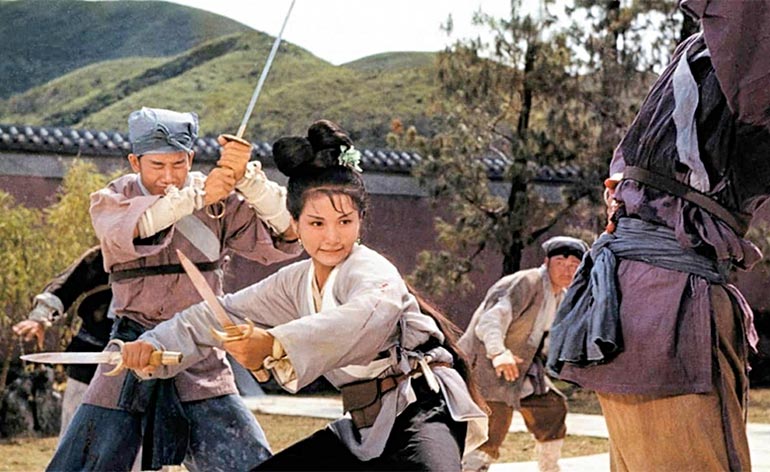
“Come Drink with Me,” though another Shaw Brothers-produced movie, demonstrates, right from its opening images, a markedly different cinematic sensibility; the immaculate framing and expressive use of landscape already announced a voice (or, more specifically, an eye) breaking away from the constraints of studio filmmaking. King Hu’s influence over wuxia cannot be overstated; it’s immeasurable, and his legacy in the genre begins here.
The movie starts when the son of a local governor is kidnapped and a female warrior, named Golden Swallow, is hired to retrieve him. A fierce fighter, she is nevertheless outmatched by the kidnappers and help comes from the most unexpected place: the local drunk, who may have hidden depths and connections with the villains.
Unlike all of the other movies mentioned so far on this list, the action in “Come Drink with Me” doesn’t come from the intensity of hand-to-hand brawls, but rather from the elegance of swordplay. A lot of writing focuses on one particular aspect of Hu’s style: the dance-like movements of the martial arts choreography, something of which this film is a prime example. The fight sequences here resemble more the delicacy and purpose of motion that you would see in a ballet (or Peking opera, a huge influence on Hu) than the go-for-broke acrobatics that usually populate the genre. But all that methodical grace in Hu’s mise-en-scene would be lost without his equally careful attention to editing: every cut enhances the display of bodies in movement, as well as their relationship to the space around them.
In fact, craft-wise, “Come Drink with Me” is an all around masterpiece. Hu’s compositions are some of the best of all time; he can stand tall against any master of world cinema as far as visuals are concerned, and the beautiful widescreen shots of this movie already offer a peak at the heights he’d reach is his later, more famous films, like “A Touch Of Zen.” So far ahead was he from the rest of the Shaw Brothers fare (incredibly entertaining as they all may be), that this was the last time he worked for the studio, due to constant internal struggles to fulfill his vision. Hu’s subsequent work became increasingly more ambitious and epic, more concerned with matters of spirituality, but “Come Drink with Me” is the purest action movie he ever made, retaining both his technical mastery and the fun the studio he still worked for was known to deliver.
1. Eastern Condors (1987)
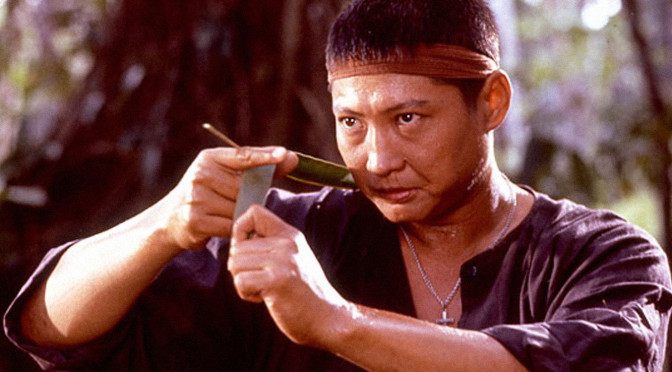
A man on a mission movie, a Rambo-esque shoot-em-up, a meeting of some greatest names of Hong Kong action cinema ever and, of course, an exhilarating martial arts dazzle: “Eastern Condors” truly has it all.
Directed by possibly the best fight choreographer ever, Sammo Hung, responsible for a number of Jackie Chan’s best movies (and also featured in the previously mentioned “Kill Zone”), the film is a riff on “The Dirty Dozen”: a group of prisoners is assembled to undertake a secret mission that will take them deep into Vietnam, after the war has ended, to destroy a hidden depot of weapons the Americans left behind. On the way, they are joined by a trio of female freedom fighters and a local charlatan.
Decades before Stallone had the idea of bringing together the most iconic action stars in a single movie, Sammo Hung did it first and better: “Eastern Condors” features Hung himself, Corey Yuen (director of “Yes, Madam!” and stuntman extraordinaire), Yuen Woo-ping, Wu Ma, Dick Wei, and a several of others, not to mention Oscar winner Haing S. Ngor. But even this jaw-dropping assembly is shadowed by Hung’s future wife, Joyce Godenzi, who, as the leader of the freedom fighters, gets to perform some of the most breathtaking moves in the film.
For those not familiar with Hung’s peculiar style (and you definitely should watch his movies if you’re interested in the genre), this is an excellent place to start. Though considerably less comedic than his usual output, “Eastern Condors” still demonstrates his unique handling of abrupt tonal shifts and the effortless mastery over the action sequences. This a movie that goes from a comic moment of bonding between the characters to a horrifying scene of psychological torture at the hands of the Viet Cong, but somehow everything feels cohesive.
And if you’re simply looking to be thrilled by spectacular action, “Eastern Condors” is for you: it’s probably the most action packed movie on this list, truly relentless in pacing but never tiring or numbing, since Hung finds variations within every sequence that makes them distinct from each other. Truly one of the best of its kind.